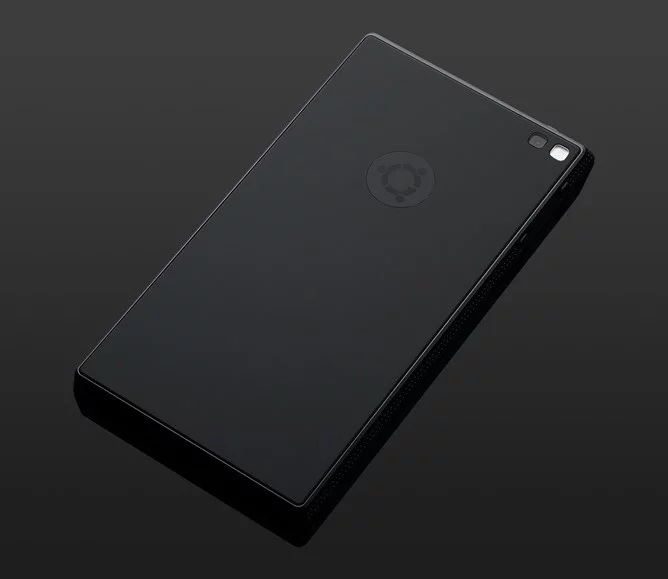Canonical going for crowdfunding record with Ubuntu Edge concept phone
Canonical has been working on the mobile version of Ubuntu for a while now, but as for actual devices shipping with it, there hasn’t been anything concrete– until now. In what’s both a crowdfunding experiment and a radical new way of thinking with regards to new mobile technology, the Ubuntu Edge concept device is now on IndieGoGo, trying to raise $32 million in the next 30 days.
The Ubuntu Edge is meant to be a testbed of new mobile technology, in many ways. It’s a high-end device, but it’s also a device that features technology that won’t make it into your average consumer level devices until the production cost can be brought down. It’s a device that aims to separate enthusiasts and professionals in the mobile tech field from the people who just buy whatever device is the latest flagship device.

The idea is good in my opinion, and what’s known of the specs so far are also interesting. The device will be a dual-boot device with both Ubuntu for phones and Android available, which is a commendably self-aware decision from Canonical’s side, allowing enthusiasts to continue using Android on the new device. Finally you have the ability to run Ubuntu desktop straight from the device, a software feature that we’ve heard of earlier. The idea is that the device will convert into a desktop computer when plugged into a screen and accessories.
In what I can only describe as a massive breath of fresh air, the display will be chosen based on the best combination of resolution, color reproduction, brightness, and other aspects, instead of just being a ridiculous focus on resolution like what we’ve seen in flagship devices this year. The internals will feature whatever processor is fastest at that time, as well as at least 4GB of RAM, and 128GB of storage. These specs are important due to the desktop PC functionality, and will hopefully be enough to make that an actually viable feature. Dual LTE chips, NFC, 8 and 2 megapixel cameras, and other common specs can also be found in the Edge.
 As for the materials and design, the Edge will be a 4.5-inch device with a metal body and a sapphire crystal display. Sapphire crystal is essentially the next generation of screen material, and a step up from glass in terms of durability. Finally, the battery will use silicon-anode technology, aiming to shove more power into the same space.
As for the materials and design, the Edge will be a 4.5-inch device with a metal body and a sapphire crystal display. Sapphire crystal is essentially the next generation of screen material, and a step up from glass in terms of durability. Finally, the battery will use silicon-anode technology, aiming to shove more power into the same space.
If funding is successful, the Edge will ship in May of next year. There’s a limited one-day $600 perk (IndieGoGo’s version of Kickstarter’s rewards) that will get you an Edge for that price, and if you miss it the next step up is $830. Canonical certainly needs to sell a lot of these devices, as the $32 million funding goal is an all or nothing deal, with the description explicitly stating that there simply won’t be an Edge if the funding doesn’t succeed.
I think this device is interesting on a lot of levels. I completely agree about the premise of a concept device for enthusiasts, and I think that alone will help bring in the backers on this one. Hardware-wise the Edge is interesting, although it seems to have a lot of hardware in there for the sake of the desktop PC functionality.
For me personally, it’s not that interesting. A concept device like this that is supposed to show off the future would have needed things like actually measurable advances in battery technology, water/dust/drop proofing, wireless charging, measurable advances in camera technology, and so on to grab my attention, especially when it’s a 2014 device. As it stands, it just seems to me like this isn’t that extraordinary even today, and the shipping date is almost a year from now.
Perhaps the biggest reason why I’m not going to get one of these however is that in today’s mobile tech world, a lot of advances come in the form of software. While this arguable has that as well, I wouldn’t call Ubuntu in any form an advance in technology, but rather an alternative. It’s not an OS I’m likely to use, and Android is naturally secondary on this device. That’s just my opinion though, nothing else.
Still, I do hope it succeeds. I don’t particularly think we need another mobile OS, but a device that dual boots Android and a new OS while also providing a desktop PC option is certainly a heck of a lot better than one that tries to take on the market with a few nice UI screenshots. As for how likely it is to raise that much money, it’s anyone’s guess at this point, but one thing’s for sure: this is one project where anyone who’s interested needs to step up.
[IndieGoGo]

